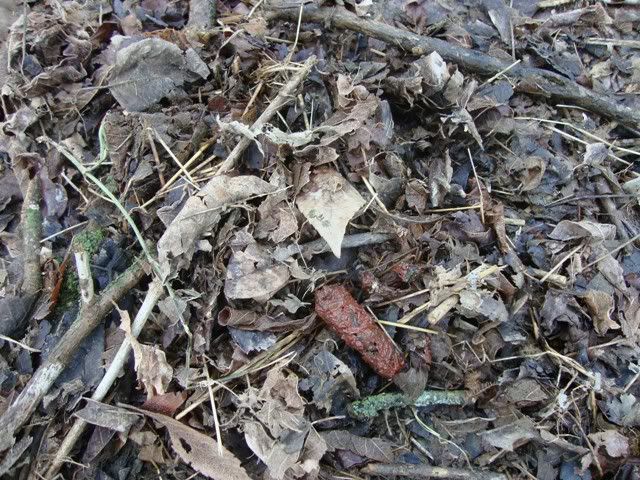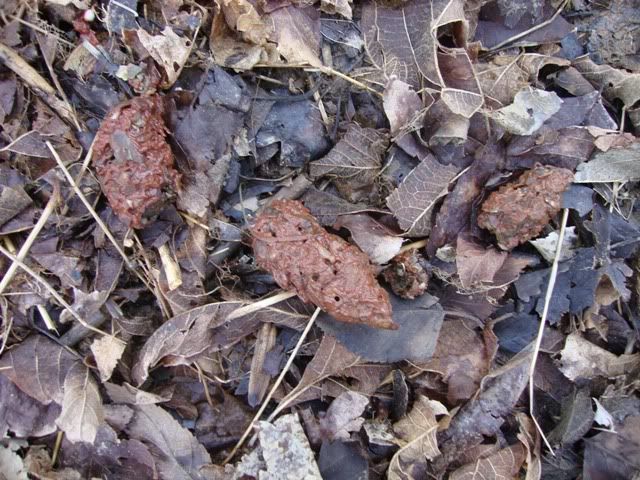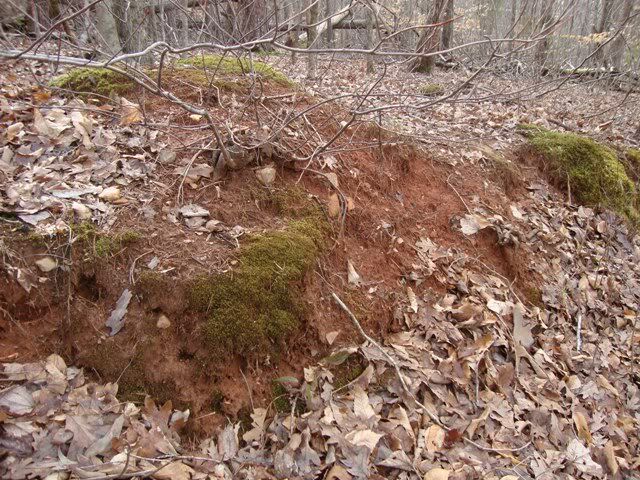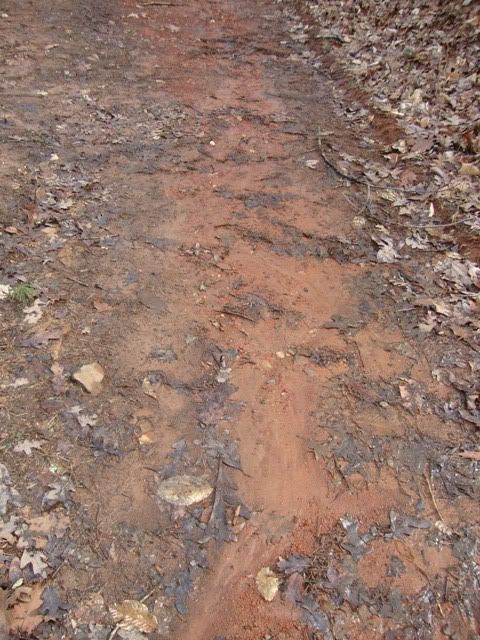Last week, I investigated the river otter latrine (Lontra canadensis) that I have been monitoring for a month.
As has been the case every week, I found fresh otter scat carefully deposited on pile of debris.
This otter scat looked alittle different than it did in previous weeks. How did it differ, you ask?
It was red.
Above: Two examples of red otter scat found on March 11, 2011
Although it is tempting to think the crimson hue of this poop is the result of blood....I think another culprit is more likely: soil erosion.
We had heavy rains for nearly a full day and night immediately prior to me visiting the otter latrine and finding the red scat. You'll see from the pictures below that the soil in our region is dominated by reddish clay (see below). This clay erodes into waterways during heavy rain events. This sediment is then picked up by the otters when they feed on crayfish or shellfish (which hang out on the stream bed).
Above: examples of the red clay soil in our region
Above: red clay being washed down a trail near the stream after heavy rains
What impact does this have on river otters? I dunno. I couldn't really find any information on how sedimentation affects otters. I found a few sources that comment on how erosion isn't a good thing for otters(for example Illinois DNR, 2006). Yet, these comments seem more to do with associated fertilizer/pesticide run-off than sediment deposition in streams. Furthermore, from what I've found, comments on how erosion and sedimentaiton affects otters is mostly anecdotal. There is some work done on how contaiminants (such as PCBs) can affect European otters (Lutra lutra), and these contaiminants can get bound in sediments (Traas, et al., 2001). But other than that, I couldn't find much. Perhaps someone else knows of research that I've missed.
But, anyways....what makes the otter crap red? Soil erosion (I think).
More otter-related posts to come in the future!
Literature Cited
Traas, T. P., et al. 2001. Congener-specific model for polychlorinated biphenyl effects on otter (Lutra lutra) and associated sediment quality criteria. Environmental Toxicology and Chemistry 20:205-212.




Interesting. The red in the clay is very likely iron oxide, which I think can be bad for human in very high amounts, but I don't know about animals, such a otters.
ReplyDeleteFunny thing - the iron oxide makes the water smell a bit like blood (that has lots of iron of course). Wonder if the animals notice/like that?
Yeah, iron oxide does seem likely....
ReplyDeleteI can't believe I didn't think of this before, but I'll ask one of my colleagues at work who is a soil ecologist and has done sampling on some of the riparian corridors at this site.
I'll have to ask her what the soil make up is!
Would be interesting to know if the soil makes a scent like blood in the water!
Hey Randomtruth...
ReplyDeleteAsked my colleague today about the soil. She said, yeah...iron oxide. Mostly because the soil here has been massively eroded to the point that we are back to original sea bed.
Interestingly, there was work done on the soil in this region back in the late 70s. We are in a region referred to as "the Piedmont". The soil here is, in general, incredibly eroded due to the slash and burn agriculture that has come and gone since the time of European settlement. Apparently, we are in our 4th generation of forest on the lansccape that has arisen between agricultural episodes. This fella (Tremmel, in 1979) estimated that the region has lost about a foot of soil since Colonial times.
Most of ths soil we have has been the result of the Appalachian Mtns eroding (the soil here is essentially outwash from that erosion). So the soil here is very old and very weathered.
Interesting stuff!
Don't know if anyone still monitors your site, but I have a different thought. I'm in the wetlands of CA. No red soil here. Ours is very bland grey. Our otters eat a lot of crayfish, I I believe this plays a large roll in the red color.
ReplyDelete